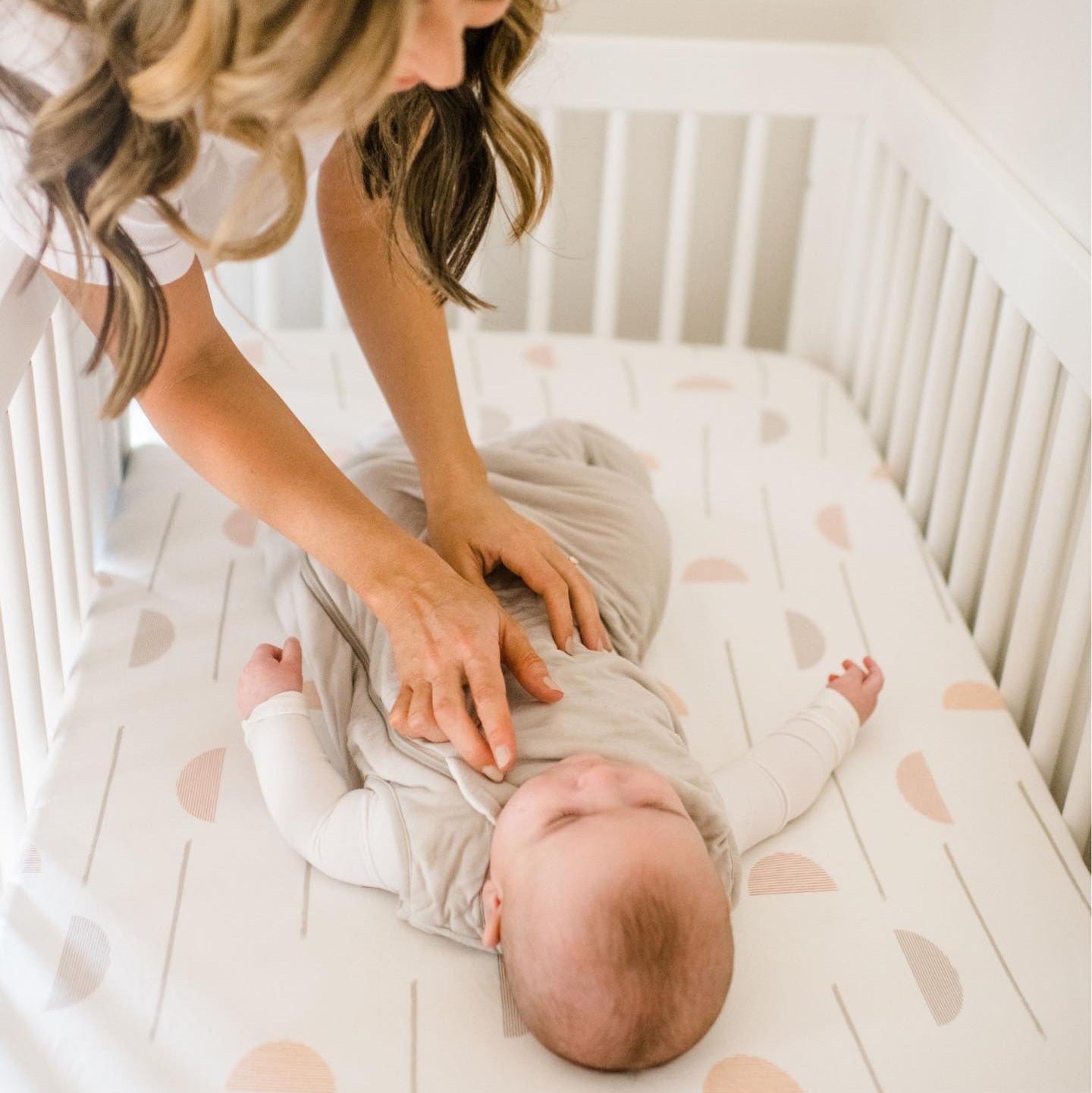Swaddling is an essential tool that you can begin using the moment your baby is born. After spending the better part of a year curled up inside a cozy womb, your baby spends the first few months of life trying to adjust. That adjustment involves a lot of crying, and understandably so, because the outside world is a lot colder, noisier, and scarier than their previous home. Not only do external stimuli wreak total havoc for your baby’s sleep in these early days, but there are also newborn reflexes, such as the Moro reflex, to contend with. The Moro reflex, also known as the startle reflex, is thought to be a survival instinct to help infants cling to their mother when falling. Honestly speaking, it’s a pretty cool reflex—but when you’re making your fifth attempt to lay your soundly sleeping baby in their bassinet, only to have their arms and legs splay wildly the second they’re out of your arms—well, it’s hard not to curse human nature. Thankfully, humans long, long ago, came up with the ingenious idea of swaddling.
Swaddling helps your baby feel snug and secure, prevents them from startling awake, and mimics the warm coziness of your womb. Although swaddling indisputably helps your baby, and you, sleep better, there are still rules you must follow to ensure your baby’s safety. Kyte BABY’s Sleep Bag Swaddler is a patent-pending sleep system that makes both swaddling and transitioning away from swaddling as easy as can be. The swaddler is made up of two parts: our award-winning sleep bag and a swaddle attachment that is fully removable once your baby outgrows it. Ditching the swaddle can be challenging, but continuing to use the same, familiar sleep bag underneath makes the change much easier for both you and your baby. To make sure you use the swaddler as intended, follow our list of do’s and don’ts, so you can rest easy, knowing your baby is comfortable and safe.

DO’S
DO introduce the swaddler as early as possible
- Starting right from birth helps your baby transition from the womb to the outside world. It provides them with comfort, security, warmth, and can help soothe colic. The longer you wait to introduce swaddling, the more your baby will fight it. Since swaddling is only for newborn days, it’s best to start from birth.
DO place your baby on their back to sleep
- The single most effective action you can take to lower your baby’s risk of Sudden Infant Death Syndrome (SIDS) is putting them to sleep on their back.
DO follow Safe Sleep guidelines
- Not only should you always put your baby to sleep on their back, but do so on a flat, firm surface in their own crib or bassinet. Don’t use sleep positioners, like nests or pillows. Never leave loose blankets, loose bedding, crib bumpers, toys, or any other soft objects in their crib or bassinet.
DO make sure the Velcro is secure
- When using the swaddle attachment on your swaddler, take care to ensure that the Velcro is securely attached. This will prevent the swaddle from moving when your baby moves and potentially coming loose.
DO listen to your baby
- Look for signs of discomfort when putting your baby to sleep. If they are uncomfortable, they will let you know. If they are crying, warm to the touch, and have flushed cheeks, these are signs that your little one is overheating. Our swaddlers are 1.0 TOG, which means your nursery temperature should be 69 to 73 degrees Fahrenheit.
DO use the swaddler as part of your bedtime routine
- Having a bedtime routine is essential to building sleep associations, which help your baby sleep better as they grow. Since the Sleep Bag Swaddler is both a swaddle and a sleep bag, your baby will be used to a sleep bag from birth. As your baby outgrows the swaddler and moves into a larger sleep bag, they will retain the same sleep association.

DON’TS
DON’T swaddle too tightly
- Although you want your baby to feel snug, you don’t want to wrap the swaddle too tightly. You want them to be able to breathe freely, so you should be able to fit two fingers on your baby’s chest under the fabric.
DON’T swaddle too loosely
- Alternatively, wrapping the swaddle too loosely can pose another hazard. Loose fabric may make its way up and accidentally cover your baby’s face and potentially cause suffocation.
DON’T cover your baby’s face
- The swaddle attachment should not cover any part of your baby’s face, including their chin. Securely wrap the swaddle below the shoulders, about 2-3 inches below the chin. Loose fabric around your baby’s face poses a great risk of suffocation.
DON’T swaddle while your baby is fussy
- If your baby is crying or fussing as you attempt to put them in the swaddler, pick them back up until they are calm. A fussy baby will fight the swaddle more, and only using it when they are calm helps them make positive associations with the swaddler.
DON’T limit your baby’s movements against their will
- Some babies hate having their arms pinned down, and no amount of forcing it will change their minds. In these cases, it’s best to listen to your baby and let their arms be free. Simply wrap the swaddle attachment under the armpit so they can freely move their arms and still feel snug.
DON’T use past 8 weeks
- All good things must come to an end, and swaddling is no exception. While swaddling is an invaluable tool during the fourth trimester, the AAP recommends to stop swaddling once your baby is 8 weeks of age (or begins showing signs of rolling, whichever comes first).
DON’T use once your baby shows signs of rolling
- Even if your baby is younger than 8 weeks, once they start rolling or showing signs of beginning to roll, it’s time to ditch the swaddle attachment. At this point, the swaddle poses more risk than benefit, since a swaddled baby may roll onto their face and be unable to breathe.

When you follow these tips, you can use our Sleep Bag Swaddler safely and effectively! Once it’s time to say goodbye to the swaddle attachment, the buttery soft sleep bag underneath will still help your baby feel cozy and secure, so that both you and your baby can still sleep soundly.















